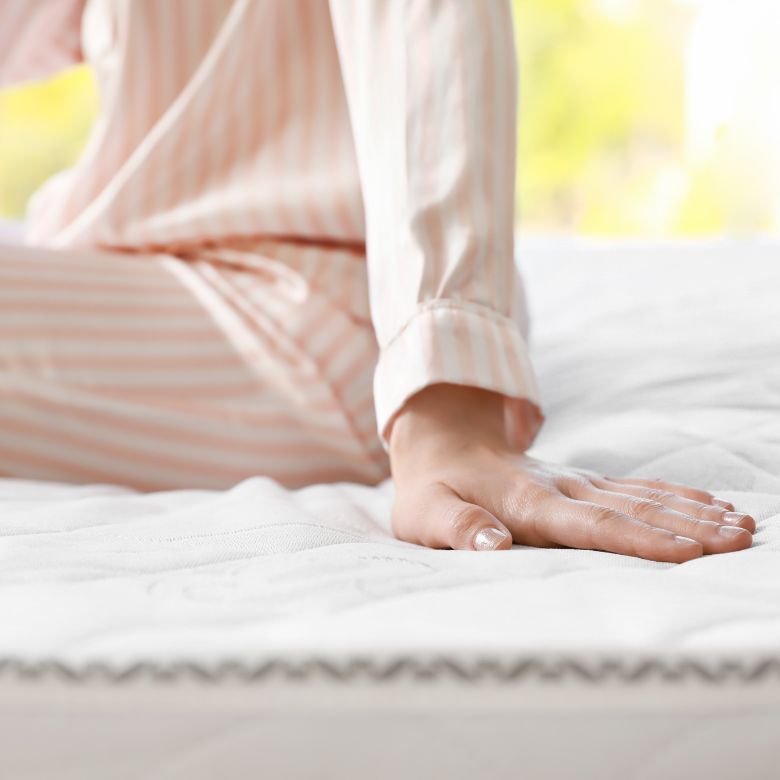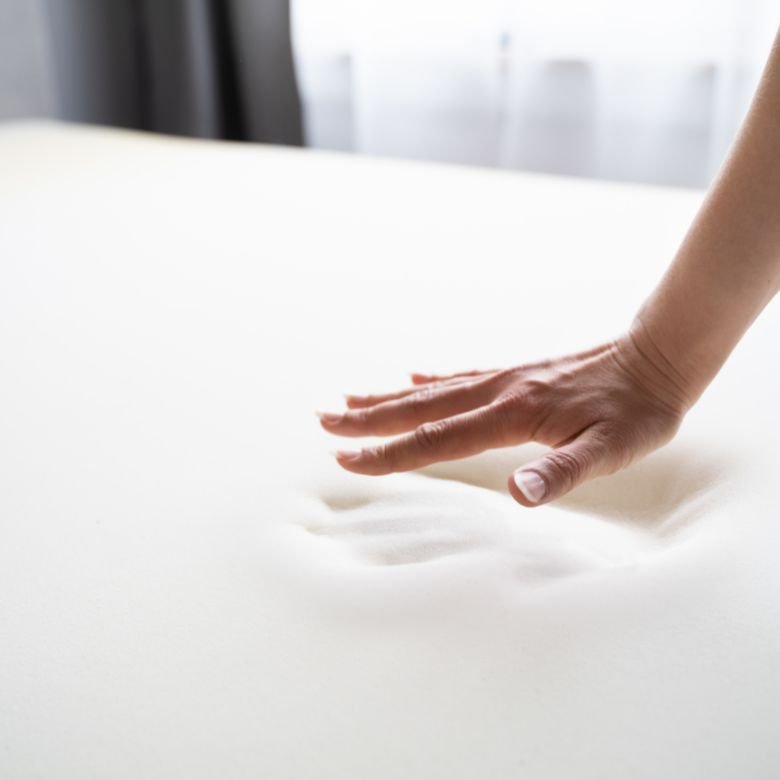Nowadays, when everyone is exposed to stress and chronic fatigue, there is more and more talk about the need for quality rest and sleep hygiene. These factors have a huge impact on our health and mental comfort. To take care of them, it is worth modifying your lifestyle and looking at the furniture and accessories you use every day. The types of foam in mattresses are extremely important and should enable us to get a full night's rest every night. Which product would be the best choice? Let's find out!

Get to know the types of foams in mattresses
It’s best anywhere, but best at home; this saying very often also applies to sleeping in your own bed. Everyday comfort is largely down to the mattress we choose — the type of foam used in its manufacture is crucial here. A poor quality product will significantly reduce the quality of our sleep. It can also increase back, muscle and joint pain and even contribute to the development of allergies or infections.
All types of foam in mattresses should be characterised by their uniform structure, durability and breathability. Particularly appreciated among them are anti-allergenic materials, as well as ecological materials. When choosing, it is worth paying attention to the properties and density of the various foams, so we have described the most popular materials for you below.
Polyurethane foam — the most common choice for manufacturers and consumer
Polyurethane foam is a product with many versatile applications. Known as an insulating and sealing material, it is used in the construction and furnishing of houses. The right kind of polyurethane foam can also become the filling of an extremely comfortable, customised mattress.
Polyurethane is a component of foams obtained by a chemical reaction. This plastic was discovered as early as the 1930s. Polyurethanes can be used in a variety of ways, as they can assume different states of aggregation and properties depending on the substances with which they are combined. It is worth mentioning that polyurethane foams are lightweight, relatively inexpensive and also very resistant to damage.
Polyurethane proves its worth as a component of foams dedicated to mattresses and seats placed in a variety of vehicles. Polyurethane foam stands out for:
- flexibility,
- resistance to damage,
- appropriate response to high temperatures,
- resistance to bacteria, fungi, mould and mites,
- good ventilation,
- uniform structure,
- resistance to deformation,
- anti-allergenicity.
The polyurethane systems offered by the PCC Group work well in the form of utility foams and thermal insulation.
See also the range of PUR spray foam insulation.
Latex foam — ideal for allergy sufferers
Another type of foam in mattresses is based on latex (this material is made from natural and synthetic rubber). Their main advantage is their high level of resilience and flexibility. Thanks to them, the mattress adapts to the shape of the users’ body, including, above all, the curves of the spine. This property has a huge impact on our health, wellbeing and sleep quality. The right mattress can prevent pain, reduce pressure and aid muscle recovery.
Other properties of latex foam include:
- high durability and resistance to deformation due to high density,
- excellent ventilation thanks to the porous structure,
- antibacterial and antifungal.

Highly elastic foam — a great addition to a mattress
The main characteristic of high resilience (HR) foam is its resilience. In this case, we are talking about so-called high point elasticity; therefore, just like latex, a mattress made of it adapts perfectly to the shape of our body. The HR foam is highly ventilated and does not heat up, providing a high level of comfort.
Other advantages of this type of foam in mattresses are:
- moisture wicking capacity and good air circulation,
- resistance to damage and deformation,
- anti-allergenicity.
Highly elastic mattresses are characterised by their high density compared to polyurethane foams. This means they are less prone to deformation.
Thermoelastic foam — comfort for two
This type of foam in mattresses reacts to our body heat, providing thermal comfort. Sleep becomes extremely pleasant and restorative. The properties of thermoelastic mattresses are as follows:
- adapt to the shape of the body,
- have a regenerating effect,
- improve blood circulation,
- do not collect dust and mites,
- are durable and long-lasting.
However, the perfect fit and thermoelasticity also has its downsides. For some people, the heating of the mattress may be an advantage, while for others it may be a disadvantage, especially during the spring and summer season.
Interestingly, thermoelastic foams were created by a NASA team, guided by the safety and comfort of pilots and passengers. However, the material has quickly gained popularity among mattress manufacturers, not only for its thermal properties, but also for its ability to provide a comfortable rest for two people. This is because the movements of one partner do not affect the deformation on the rest of the mattress surface.

Which mattress foam will be the best choice?
Wondering which mattress foam will serve you best? Note that mattresses are usually made from two types of material to ensure the finished products are of high quality and versatile. Here are some tips to guide you in your selection.
- Polyurethane foam will be the best choice for people who:
- have a limited budget,
- are looking for a mattress that is resistant to mechanical damage, bacteria and mould,
- feel comfortable sleeping on a moderately firm surface.
- Latex foam is especially recommended for allergy sufferers. It is worth remembering that it is characterised by a high degree of hardness.
- Highly elastic foam is a good choice for large double beds. It provides a comfortable night’s rest and recuperation, especially for people who do sedentary work or suffer from back and joint pain.
- Thermoelastic foam provides thermal comfort. If you are immunocompromised and struggle with the constant feeling of cold, this type of foam in a mattress will be the best choice for you. It will also work well in large beds.
If you do not suffer from problems with allergies or cold sensations, you can choose your mattress based solely on your personal preferences. You have both hard and soft materials to choose from; below we suggest how to distinguish between them.
Read: where to buy the ingredients for PUR foam?
Does the density of the foam in the mattress matter?
Yes! The density of the foam in the mattress not only affects the comfort of the users, but also the durability of the product. The greater the density, the greater the strength. This parameter is also a basic indicator of the hardness of the product. Density is defined as the number of kilograms of foam used per cubic metre of mattress surface.
The choice of the type of foam in a mattress can be dictated by one’s preferences (some people prefer a soft, others a firm place to sleep), health problems (for some people, a good quality and suitable firmness of mattress is crucial for recovery) or the weight of the user.
You can recognise the density of the foam in the mattress and its firmness level by the markings. Manufacturers use the letters ‘T’ and ‘HR’. For example, the designation ‘T25’ symbolises a density of 25kg/m3. The higher the value, the more foam used per cubic metre of product, which automatically means a higher firmness of the mattress.
Manufacturers of high-quality mattress foams can explore the wide range of polyurethane systems and other raw materials used in mattress production available on the PCC Group Product Portal. The product catalogue includes Syncopol FG3002, a unique low-viscosity product for polyurethane foams. In our range you will also find other popular plastics with a wide range of applications.
Przeczytaj również: Piany visco i hypersoft
- Swinarew Beata, „Poliuretany — nowoczesne wszechstronne materiały. Cz. 2. Pianki poliuretanowe", Przetwórstwo Tworzyw 21 (2015), s. 428-434,
- Malcolm P. Stevens: Wprowadzenie do chemii polimerów. Warszawa: PWN, 1983, s. 282-287
- George Woods, „Flexible Polyurethane Foams”, Applied Science Publishers, New Jersey, 1981